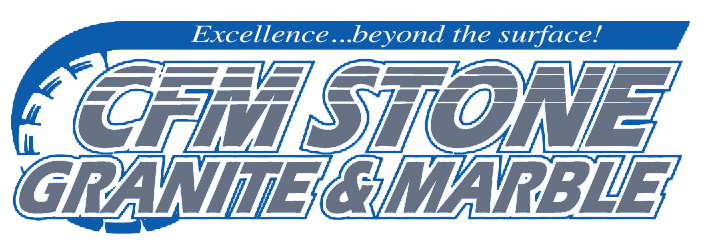Educational Resource
INFORMATION ABOUT OUR PRODUCTS
Soapstone

Soapstone is basically a large deposit of talc, and talc is rich in magnesium. To get soapstone, there must be a fault line called a subduction zone. In this area, there are two tectonic plates moving toward each other. The plates have to meet in a way where one goes under the other forcing it upward while the one underneath is pushed down into the earth. This is not a fast process. The plates only move at a rate of a few inches a year. As a result of this pressure, as well as water and other possible fluids, the existing rocks change in their makeup.
• Soapstone is a very soft stone that has a smooth, warmer texture than other types of stone countertops.
• Soapstone is a very dense and does not need to be sealed. There is no way that sealer can even ‘enter’ the stone.
• Left on its own, soapstone will eventually darken over time, but the sleuth of mineral oil will accelerate the process.
• Soapstone is an inert material which means it is not affected by acids or alkali materials.
• Color selection is limited, usually grey and green tones, but veining can be found in the material.
• Soapstone will easily scratch because of its softness, but any unwanted scratches can be easily sanded out.
• Soapstone is very heat tolerant, and will not be damaged by placing hot pots on top of it.
Granite

Granite is an igneous rock which was formed by once molten material that has cooled and hardened. It is made up of a large mineral grain that fit tightly together. The primary mineral constituents are quartz, mica and feldspar which are punctuated by a wide variety of accessory minerals. Granite is strong because its mineral grains have grown tightly together during a slow cooling process. Quartz and feldspar are harder than steel, making it a durable surface material.
• Granite is a porous material and should be sealed properly to prevent or minimize stains from dark and/or oily liquids.
• Some granites may contain calcite, a mineral typically found in marble & limestone which make it vulnerable to acids.
• Many granites have the presence of pits and fissures, a typical characteristic of natural stone.
• Granite comes in a wide variety of patterns and colors to fit almost any application.
• Granite is not affected by the presence of heat, typically from setting pans in the countertop.
Quartzite

Quartzite is a metamorphic rock formed when quartz-rich sandstone has been exposed to high temperatures and pressures. Such conditions fuse the quartz grains together forming a dense, hard, equiangular rock. The name quartzite implies not only a high degree of hardness, but also quartz content. Quartzite generally comprises of more than 90% quartz, and some examples, containing up to 99% quartz, are the largest and purest concentrations of silica in the Earth’s crust.
• On the Mohs test, Quartzite has been given a hardness reading of 8/10. This means that it is harder than glass.
• Quartzite cannot etch with water or anything acidic. That is 100% quartzite.
• Many quartzite slabs today contain other minerals that may etch with water or acidic substance. Sealing is required.
• Quartzite slabs may have the presence of fissures and pits that are sometimes filled at the processing plants.
• Quartzite countertops are more expensive than their granite counterparts.
Sandstone

Sandstone is a sedimentary rock consisting of sand, usually quartz or feldspar, cemented together by various substances such as silica, calcium carbonate, iron oxide or clay. The formation of sandstone involves two principal stages. First, a layer or layers of sand accumulates either from water or by air. Finally, once it has accumulated, the sand become sandstone when it is compacted by the pressure of overlying deposits and cemented by the precipitation of minerals.
• Sandstone is an extremely porous material, and will quickly absorb any liquid spilled on it if on sealed properly.
• Sandstone can take a polish, but the standard finish is a honed look and feel.
• Cleaners should be tested before using on the material.
Onyx

Onyx is a calcareous stone that is formed by dissolving limestone and then depositing it into a new stone formation. Ultimately formed by dripping water in caves, onyx is a very fragile and brittle stone. Onyx is banded from of chalcedony, a cryptocrystalline consisting of fine intergrowths of silica quartz and moganite. The colors of its band range from white to almost every color is the spectrum. Onyx countertops are quite rare.
• Onyx is a very fragile material, typically requiring a fiberglass backing material to help support its structure. This translates to smaller slab sizes available for your project. Expect to factory repaired cracks and fissures in this type of stone.
• Onyx is a very soft material. It does not hold up well to regular use. If you move pots and pans around on it, you will scratch the surface. Anything hard or sharp will have no issue scraping your countertop.
• Onyx is calcium based like marble and will etch when in contact with acidic substances like wine, fruit juice, vinegar, tomatoes and even some hand soaps with detergents.
Travertine

Travertine is a porous or crystalline mineral form of calcium carbonate, deposited in layered formations by hot and cold spring waters. Travertine is a kind of sedimentary stone. Like marble, travertine is a form of limestone. When limestone is put under an extreme amount of pressure for a long time, it can turn into Travertine, the way peat turns into coal. If Travertine is left under pressure for thousands more years, it can turn into marble, the way coal can turn into diamonds. Travertine is halfway between limestone and marble.
• On the Mohs scale, travertine has been given a hardness reading of 4-5; granite is about 7.
• Travertine will etch with water or anything acidic. The material must be properly sealed to protect it.
• Travertine can easily absorb liquid, so the surface must be disinfected regularly to prevent bacteria growth.
• Travertine is a soft material and very prone to scratch. This material in not easily repaired if damage occurs.
• Travertine cannot be exposed to heat. Pads or trivets must be used with hot surfaces.
Marble

Marble is a metamorphic rock, meaning it underwent a change from its original sedimentary form. It is produced from limestone by heat and pressure in the earth’s crust. The temperature and pressure eliminate any fossils that may have existed in the initial rock. Marble is available in various colors due to the variety of minerals present in the Marble like clay, silt and sand.
• The Calcite in marble makes it sensitive to acids, meaning citric juices and vinegar and the like, will etch the surface.
• Marble is a porous material. Proper sealants will not only protect from stains, but also inhibit any etching process.
• Many marbles have the presence of pits and fissures, a typical characteristic of natural stone.
• Marble is a softer material which can scratch more easily than granite.
• Marble often had visual characteristics such as veining the make it visually and aesthetically appealing.
Quartz

Quartz countertops are man-made engineered stone countertops formed by combining 90% ground quartz (a natural hard mineral) with 8-10% resins, polymers and pigments. This forms a very hard granite-like surface. The appearance depends on how the quartz is ground: coarsely ground quartz produces a flecked appearance, while finely ground quartz produces a smooth look.
• Engineered Stone is non-porous which makes it stain and crack resistant. It does not need to be sealed.
• Smaller engineered stone slab sizes cause seams (in larger kitchen designs)
• Engineered stone is had and durable, and comes in a wide array of color options.
• Engineered stone is easy to clean with mild soap, water and a soft cloth. Glass cleaner is also recommended.
• Engineered stone is not heat tolerant; you do not want to set any hot items directly on the countertop.
COUNTERTOP COMPARISON
When it comes to selecting a new countertop surface for your home or business, there a several different factors in determining what is best. Price, maintenance, durability, and appearance are only a couple. So to help you decide what surface will work best we put together a countertop comparison table. Take a look at the table below:
| ••• | Granite | Engineered Stone | Acrylic/Polyester Plastics | Tile | Laminate |
|---|---|---|---|---|---|
| Brand Names | Zodiaq, Viatera, CaesarStone, Legacy | Corian | Ceramic, Porcelain | Wilsonart, Formica | |
| Material Make Up | 100% natural stone quarried from within the earth | Man-made: 85%-95% crushed quartz with a resin binder | Man-made: acrylic or polyester plastics | Man-made ceramic or porcelain | Man-made: printed colors/patterns on a fiberglass backing |
| Affects from Heat | Heat resistant | May be effected by high heat (above 400F) | Hot pots can warp, melt, crack, or discolor the surface | Heat resistant | Hot pots can warp, melt, crack, or discolor the surface |
| Resistance to Bacteria | Studies show granite to be one of the most bacteria resistant surfaces | Non-porous- bacteria resistant | Deep scratches can harbor dirt and moisture, can harbor bacteria | Grout is very porous and difficult to keep clean, can harbor bacteria | Non-porous- easy to clean, keeping bacteria in check |
| Scratch resistance | Highly scratch resistant-small scratches can be professionally repaired | Highly scratch resistant | Scratches easily- can be sanded to repair damage | Finish can be scratched and is usually not repairable | Can be scratched and is not easily repaired |
| Fabrication | May require seams- various edge profiles available | May require seams- various edge profiles available | Seamless- usually set on a wood substructure- various edge profiles available | Should be set on an approved sub-structure- limited edge profiles | Sheet material applied to a wood sub-structure- limited edge profiles |
| Appearance | Highly polished finish- each piece is unique in color and patterning | Polished finish- consistent and uniform color and patterning | Matte finish- consistent and uniform color and patterning | Grout joints can vary greatly tile color and shading can vary | Highly visible seems-consistent and uniform color and patterning |
| Maintenance | May require periodic sealing to prevent staining | Easy to maintain- scratches can easily be sanded out | Grout may need to be resealed often | Easy to maintain | |
| Price | $35/sq. ft. and up | Usually runs higher than granite | Prices vary based on color- many run higher than granite | Prices vary | Least expensive. |

